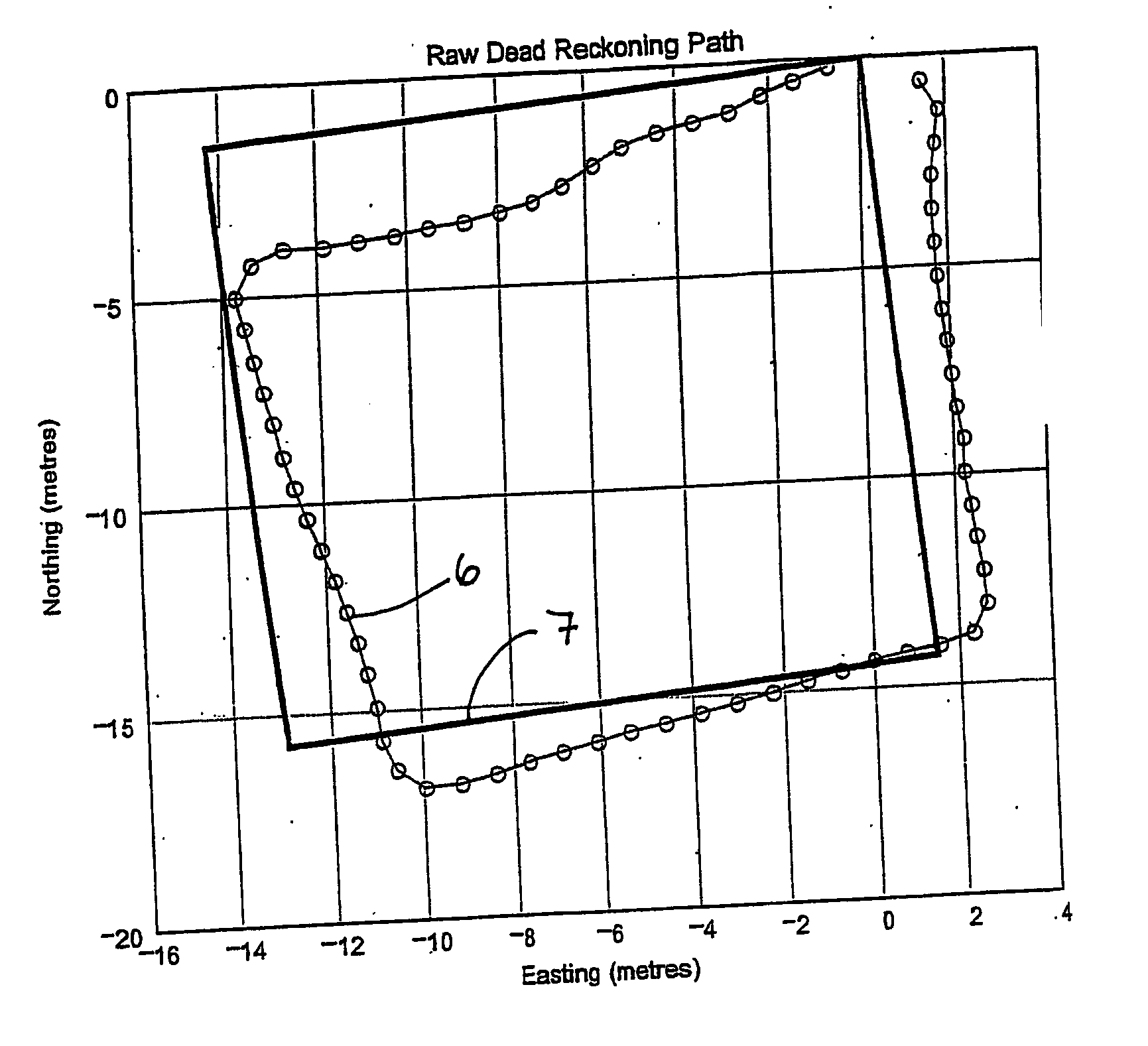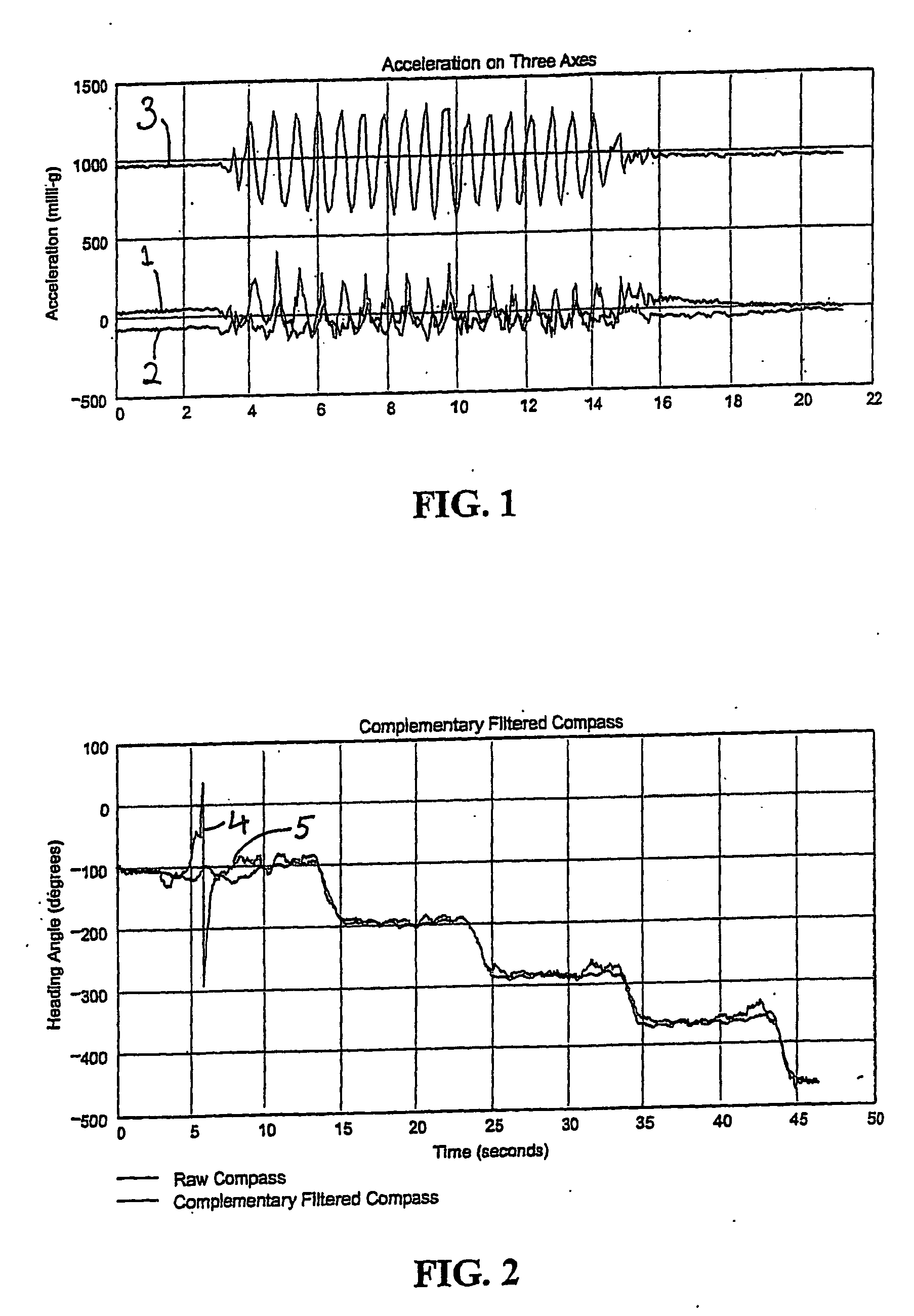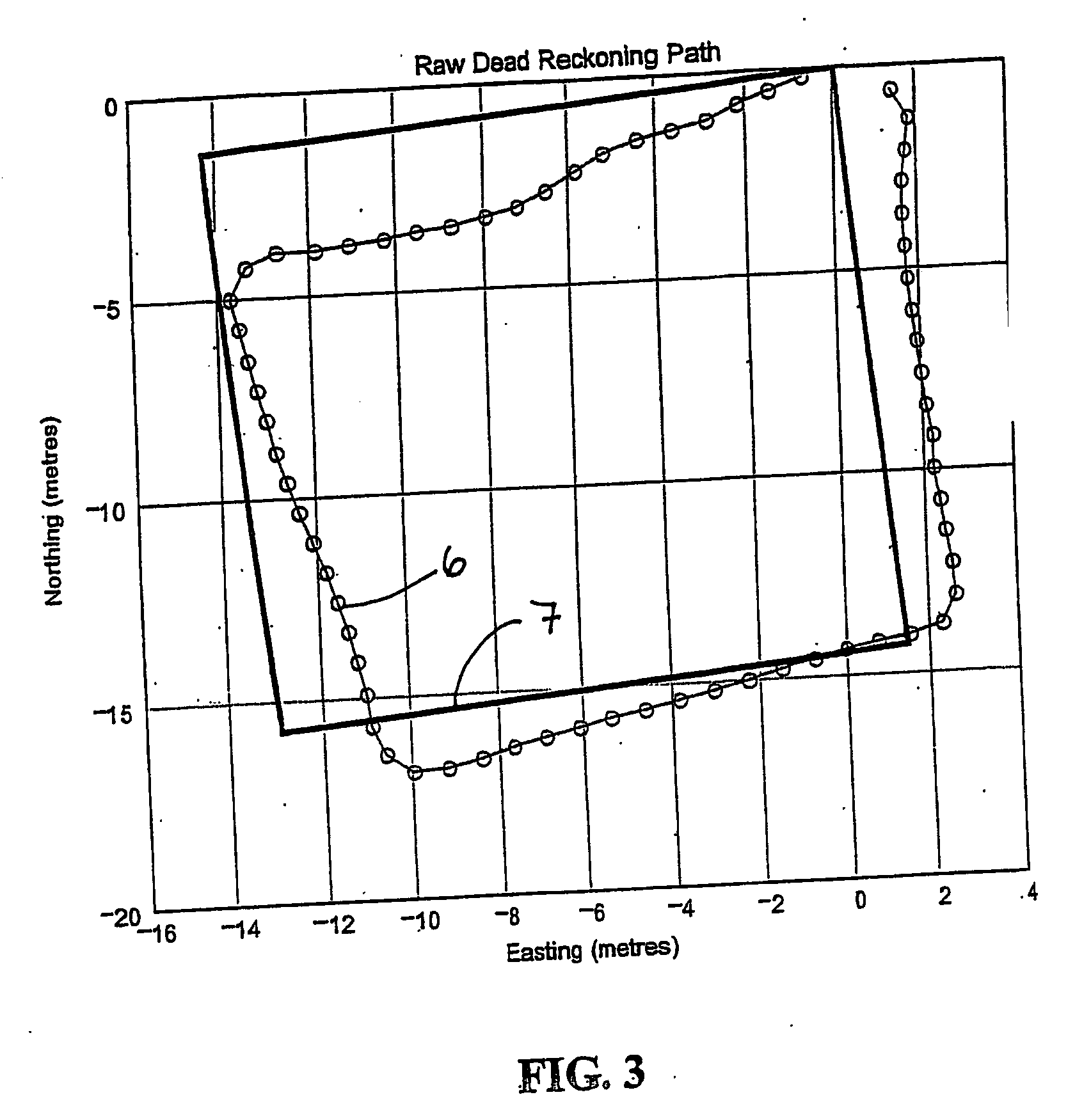Tracking method and apparatus
a technology for tracking methods and equipment, applied in the direction of distance measurement, navigation instruments, instruments, etc., can solve the problems of poor long-term accuracy, poor short-term accuracy, people or animals
- Summary
- Abstract
- Description
- Claims
- Application Information
AI Technical Summary
Benefits of technology
Problems solved by technology
Method used
Image
Examples
Embodiment Construction
[0022] The preferred embodiment relates to indoor position location, and particularly position location inside a building. The basis of the indoor operation using the inertial data is to estimate the track by counting the number of steps and by measuring the direction of travel using the compass (as corrected by the rate-gyro data). The number of steps can be determined from the accelerometer data. FIG. 1 shows an example of the accelerometer data on the x-axis 1, the y-axis 2, and the z-axis 3, for a person walling, and it can clearly be seen that each individual step can be detected on all three axes, although the steps are more clearly evident on the z axis accelerometer. Further, the data also can be used to detect when the person is stationary, so that both movement and stationary states can be deduced.
[0023] As shown in FIG. 2, the second type of sensor data that is used is the compass or heading angle. Two magnetometers are used to measure the earth's magnetic field in two o...
PUM
 Login to View More
Login to View More Abstract
Description
Claims
Application Information
 Login to View More
Login to View More - R&D
- Intellectual Property
- Life Sciences
- Materials
- Tech Scout
- Unparalleled Data Quality
- Higher Quality Content
- 60% Fewer Hallucinations
Browse by: Latest US Patents, China's latest patents, Technical Efficacy Thesaurus, Application Domain, Technology Topic, Popular Technical Reports.
© 2025 PatSnap. All rights reserved.Legal|Privacy policy|Modern Slavery Act Transparency Statement|Sitemap|About US| Contact US: help@patsnap.com



